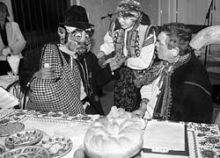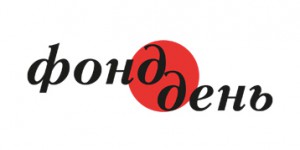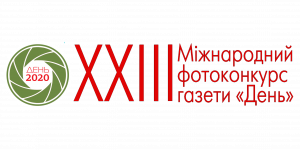The land of Ivano-Frankivsk is a small country of mountains, foothills, and plains. Lying between the rivers Bystrytsia-Nadvirnianska and Bystrytsia-Solotvynska, Ivano- Frankivsk originated as the village of Zabolottia (across the swamp) near Kniahyn and Pasichna and was renamed Stanislav under Count Pototsky. Old-timers still call it Stanislav.
The Carpathian Mountains, which cover almost half the oblast, run in two mountain ranges, Horhany with its peak Syvulia (5,964 ft) and Chornohory with its peak Hoverla (6,762 ft). The land of Ivano-Frankivsk boasts 3,500 monuments of history and culture protected by the state. Among the most prominent are the Church of St. Panteleimon in Shevchenkovo outside Halych, castles in Rakovets and Chernelytsia, the Maniava Skyt Monastery, and wooden churches in Vorokhta, Dora, and Kolomyia. The storied mountain lakes Nesamovyte, Brebeneskul, and Lebedyn are the true gems of the land. All of these places can be a magnet for tourists. The most important thing is to spin things the right way.
“Tourism is a strategic direction for our oblast. We will consider the problem solved only after 40% of the oblast’s budget revenues come from tourism,” Ivano-Frankivsk oblast governor Mykhailo Vyshyvaniuk is convinced. According to statistics, last year for the first time the oblast’s budget received UAH 10 million from tourism. Figures have always been a more convincing argument than empty phraseology.
The authorities promise a favorable climate for investors. As an example they cite the fact that last year money for the development of the region began to trickle from all corners of Ukraine. “We are open to investment, the nationality and faith of investors notwithstanding. We would like investment to help create new well-paying jobs in the oblast,” says the governor, adding that “tourism is a complex and multifaceted sector involving a thick layer of various problems and unsolved issues. A common misconception is that tourism is all about building a hotel with all the amenities. Before this, safe and quality food must be provided. Tourists want to see the culture and daily life, for which purpose a great many specialists should be trained, of which there are extremely few today. Only after accomplishing this can we expect every guest of ours to spread word about our land.” It is possible to put the officials’ words to the test only by seeing everything first hand.
Nature has created the groundwork for the development of tourism. It is up to those inhabiting this land to develop it. In Ivano-Frankivsk oblast this process is progressing at a rapid pace. Hotels, recreation and tourist centers are mushrooming. In recent years several European-class hotels have been built in the region, which is only the beginning.
WHERE TO SPEND MONEY
In early 2001, a team of enterprising enthusiasts with money and a desire to make tourism their business decided to build a ski resort, Bukovel, outside Palianytsia, a village in Yaremcha district. Foreign specialists have been brought in, using Austria’s Alpine ski resorts as its prototype. After the site was chosen, linked ski runs were planned, followed by chairlifts and other infrastructure. The payback period of the ski resort has been estimated at ten years.
The 2003-2004 season became a trial period for the Bukovel resort. Two and three-bedroom suits with all the amenities in two-story cottages began to receive Ukrainian tourists. However, according to the vacationers, not all of them like recreation of such a high level. A stay at the resort costs some $150 per person per day, which is not cheap for Ukraine. Judging from the restaurant prices (for example, honey pancakes cost UAH 19.50 per helping, a bottle of beer UAH 12, and cigarettes UAH 14; in the West this. considering local prices, is called gouging, and not to in the ultimate interests of the sellers - Ed.) one might conclude that the owners want a return on their investment as soon as possible. This means the resort is closed to rank-and-file tourists. But even well-heeled vacationers are angered by such a policy. As one guest remarked, “I can afford to pay that much. But money doesn’t fall on me from the sky, and I want to see what I pay for. For example, in Slovakia I can get better service for less.” This is a devastating argument.
Andriy Shylin, executive director of the Bukovel Resort Complex, believes that Slovakia and Poland are using dumping prices: “When these countries join the EU, prices will no doubt change there. For example, in Austria or Switzerland they remain high all the time, which does not scare off vacationers. On the New Year’s Eve our guests complained that there is nowhere to spend money in Bukovel, for which reason we plan to develop the entertainment infrastructure. Currently we have nearly eight kilometers of blue and red ski runs. By next year we plan to have twenty kilometers of ski runs and build three more chairlifts. After the winter season is over, we will close for three weeks to prepare for the summer season, for which we are developing a separate program.”
Leaving the costs aside, this resort has its advantages. Last year’s budget of the village of Palianytsia was UAH 370,000, twice that of the previous year. Bukovel accounts for a major part of its budget revenues. Moreover, the resort employs 260 locals, with wages averaging UAH 700-800. Top managers earn several times more. Thus, the village council only welcomes the development of this tourist resort.
HOME-DELIVERED HOLIDAY
In winter Western Ukraine embarks on a month of revelry and merrymaking. Beginning with St. Nicholas Day (December 19), celebrations continue well into the Epiphany (January 19). It is in this period that resort prices soar. But if your resources are limited, you might want to stay at one of the private hotels that would cost you between UAH 60 and 80 per person per day. A major advantage of the so-called green tourism is that you will witness essentially ethnic celebrations. The feast of Malanka (January 13, St. Melania’s Day and New Year’s Eve under the old calendar) is celebrated in a most interesting way in the village of Pistyn. The old-timers remember that sometime in 1917-1920 Malanka began after dinner, but major celebrations were on the following day, the Day of St. Basil. In the morning everyone attended a mass in the Mountain Church, from where all went to sing shchedrivkas [“Generous time” songs, Ukrainian New Year’s folk songs] as part of Malanka celebrations. The main characters in the Malanka observance were Malanka, Vasyl with spouse, a Jewish couple, a bride and groom, a Gypsy with his wife, and the devil. Malanka the hostess cooked and served dinner for the host, repeating that the wife did not feed her husband well throughout the year. The Jewish couple would steal something in the house and resell it to the hosts. Malanka ended on Stritennia [Candlemas]. Today Malanka has acquired features of a village pageant of sorts. Mummers or disguised villagers go from hut to hut and entertain the hosts and their guests. You might not understand the local Ukrainian language, as each region has its own peculiar dialect. But this pageant you will remember for a long time, if not all your life.
GREEN LANE FOR PRIVATE BUSINESS
The land of Ivano-Frankivsk with its unique past is ideally suited for green tourism. Such recreation makes it possible to not only experience harmony with nature but also get to know the culture of the people inhabiting this colorful land. The Carpathian Mountains are beautiful at any time of the year. In the wintertime they draw thousands of skiing amateurs and in the summertime devotees of active recreation such as hiking, mountain biking, or climbing.
More and more locals begin to understand that green tourism is the wave of the future. They organize recreation at their own homes in their own special way. Experience passes from neighbor to neighbor. At first someone from the village travels to work abroad and returns home with a little money to start his own business. Based on what he has seen in the West, the owner remodels his home into a guesthouse in like manner and passes his know-how to another neighbor. And thus the chain goes on until the last who wants to try his luck at tourist business. But then they face the problem of marketing their services. “This year Ivano-Frankivsk will host a specialized regional exhibition of green tourism, where all owners will have a chance to advertise their guesthouses, thereby fostering healthy competition among the owners. Participation in the exhibition will be free of charge, because this is in the interests of the oblast,” says Myroslav Blashchuk, chief of the Central Department of Foreign Relations, Tourism, and Trade in the Ivano- Frankivsk Oblast State Administration.
Now the major goal for both green guesthouses and tourist resorts is to develop summer recreation programs. While the winter program is a sure thing, one has to think of something special for the summer in order to lure tourists who choose between the mountains and the sea. This is where the host’s imagination is unconstrained. Some attract tourists with fishing, hunting, or mushroom gathering, others with outings to old places and museums. The most important thing is to find one’s own specialty. There is plenty to choose from. The foothills are overgrown with blueberries and mountain cranberries. Somewhat lower, on mountain slopes, you will always find blackberries and raspberries. In the summertime the mountainous landscape is dotted with many herds of sheep. Shepherds milk the sheep to make special cheese called budz. The Carpathian National Nature Reserve (with its center in Yaremcha) and Hutsulshchyna Reserve (with its center in Kosiv) have been created to protect the flora and fauna of the mountains. In the Carpathians the choosy tourist can discover many interesting things. For example, Ukraine’s highest lake, Berbeneskul (5,908 ft), on the slope of the Hutyn-Tomnatyk Mountain; the biggest wind instrument trembita; active volcanoes near the village of Starunia in Bohoradchashchyn district; the longest stone rail bridge (426 ft) in Vorokhta; the highest-lying building in Ukraine — the remains of an astronomical and weather observatory on Pip Ivan Mountain (6,630 ft), and much, much more.







